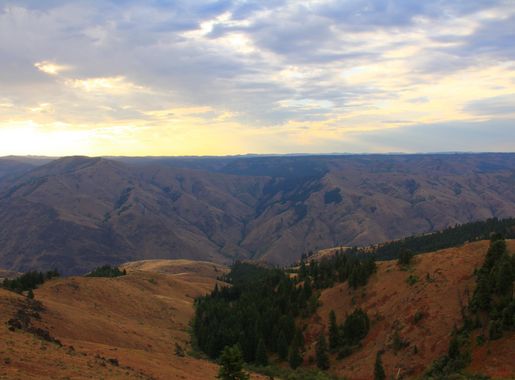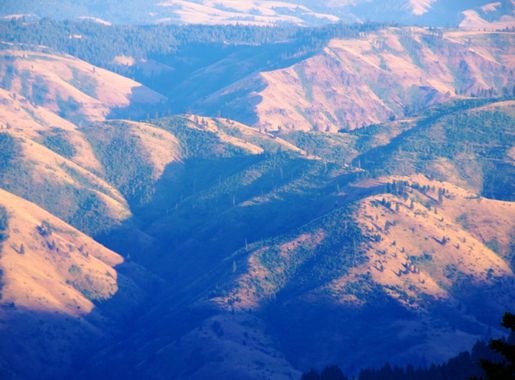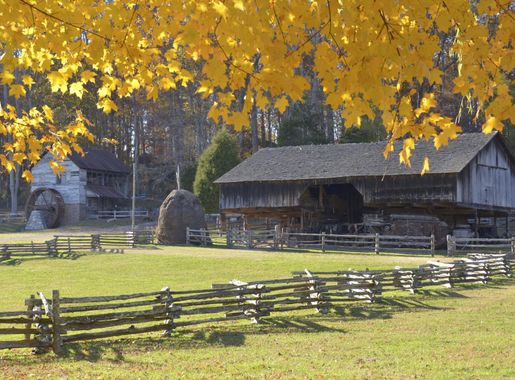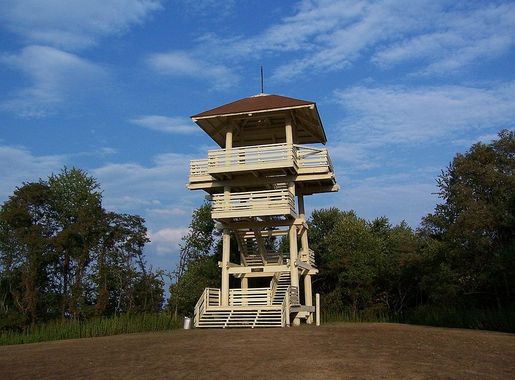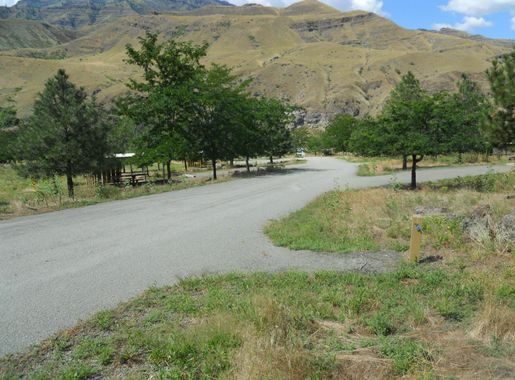
Hells Canyon: Nature's Majestic Abyss
Explore Hells Canyon, North America's deepest river gorge. Enjoy hiking, rafting, wildlife watching, and camping in Idaho’s stunning natural wonder.
Hells Canyon National Recreation Area is a stunning gem in Idaho. It features the deepest river gorge in North America, carved by the Snake River. The canyon offers spectacular views of rugged cliffs and rolling hills, making it a perfect place for nature lovers. Hiking enthusiasts will find a range of trails suitable for all levels. From short walks to challenging treks, the area offers numerous ways to explore its natural beauty. Don't miss the Seven Devils Mountains, which provide panoramic vistas of the canyon and its surroundings. For those who love water sports, the Snake River is ideal for boating, fishing, and white-water rafting. Anglers can fish for trout, bass, and sturgeon. The river's rapids offer thrilling adventures for rafters, with experienced guides available for hire. Wildlife watchers will be enchanted by the variety of animals here. Deer, elk, bighorn sheep, and bald eagles are just a few of the species you might spot. The area is also rich in plant life, with wildflowers blooming in the spring and summer. Camping is a popular activity in Hells Canyon. There are several campgrounds with basic amenities, as well as backcountry spots for a more rustic experience. Night skies are clear and offer excellent stargazing opportunities. Hells Canyon National Recreation Area is also steeped in history. Ancient petroglyphs and historic homesteads tell the story of the native peoples and early settlers who lived here. Guided tours are available to help you learn more about this fascinating past.
Local tips in Hells Canyon National Recreation Area
- Wear sturdy hiking boots; trails can be rugged and steep.
- Carry plenty of water; the area can get very hot in summer.
- Check river conditions before planning a rafting trip.
- Consider visiting in spring or fall for milder weather and fewer crowds.
- Bring binoculars for better wildlife viewing.
- Make campground reservations in advance, especially during peak season.
Hells Canyon: Nature's Majestic Abyss
Hells Canyon National Recreation Area is a stunning gem in Idaho. It features the deepest river gorge in North America, carved by the Snake River. The canyon offers spectacular views of rugged cliffs and rolling hills, making it a perfect place for nature lovers. Hiking enthusiasts will find a range of trails suitable for all levels. From short walks to challenging treks, the area offers numerous ways to explore its natural beauty. Don't miss the Seven Devils Mountains, which provide panoramic vistas of the canyon and its surroundings. For those who love water sports, the Snake River is ideal for boating, fishing, and white-water rafting. Anglers can fish for trout, bass, and sturgeon. The river's rapids offer thrilling adventures for rafters, with experienced guides available for hire. Wildlife watchers will be enchanted by the variety of animals here. Deer, elk, bighorn sheep, and bald eagles are just a few of the species you might spot. The area is also rich in plant life, with wildflowers blooming in the spring and summer. Camping is a popular activity in Hells Canyon. There are several campgrounds with basic amenities, as well as backcountry spots for a more rustic experience. Night skies are clear and offer excellent stargazing opportunities. Hells Canyon National Recreation Area is also steeped in history. Ancient petroglyphs and historic homesteads tell the story of the native peoples and early settlers who lived here. Guided tours are available to help you learn more about this fascinating past.
When is the best time to go to Hells Canyon National Recreation Area?
Iconic landmarks you can’t miss
Hells Gate State Park
Experience the breathtaking beauty and outdoor adventures at Hells Gate State Park in Lewiston, Idaho, where nature and recreation come together.
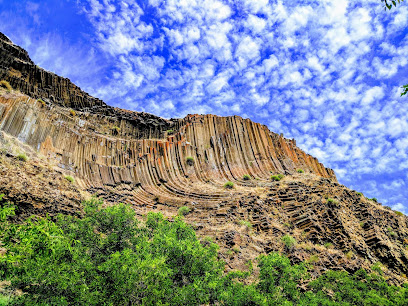
Hells Canyon
Explore Hells Canyon, the deepest river gorge in North America, where adventure and breathtaking scenery await in Idaho's natural wonderland.
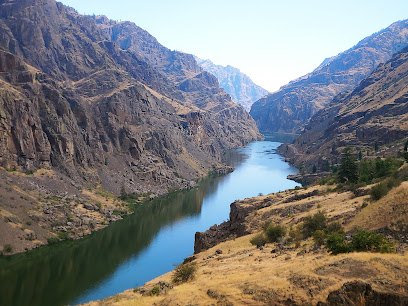
Hells Canyon National Rec Area
Explore Hells Canyon National Recreation Area: a stunning natural wonder with breathtaking landscapes, thrilling outdoor activities, and diverse wildlife.
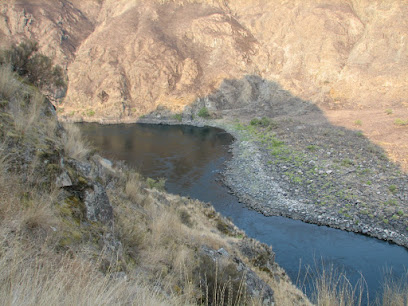
Hells Canyon Wilderness
Explore the stunning Hells Canyon Wilderness, where dramatic landscapes meet endless outdoor adventures in Idaho's breathtaking natural paradise.

Hells Canyon National Recreation Area-Idaho
Explore the breathtaking landscapes and thrilling adventures at Hells Canyon National Recreation Area, the deepest gorge in North America.

Hells Canyon National Recreation Area-Snake River
Explore the breathtaking landscapes of Hells Canyon National Recreation Area, Idaho, where adventure meets stunning natural beauty along the Snake River.

Unmissable attractions to see
Kirkham Hot Springs
Discover tranquility and natural beauty at Kirkham Hot Springs, Idaho's premier destination for relaxation and outdoor adventure amidst stunning landscapes.
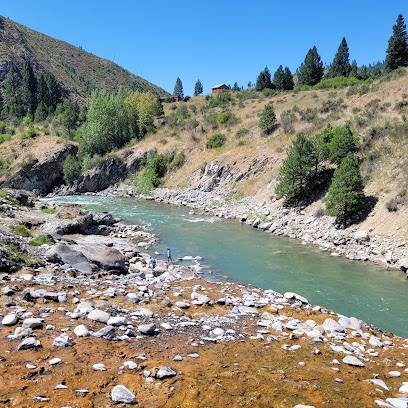
Thousand Springs State Park - Ritter Island
Explore the natural beauty of Thousand Springs State Park - Ritter Island, a hidden gem in Idaho with stunning waterfalls and serene landscapes.
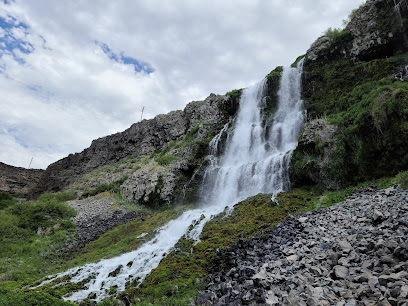
Hells Canyon Overlook
Discover stunning vistas and serene landscapes at Hells Canyon Overlook, the deepest river gorge in North America, perfect for nature lovers.
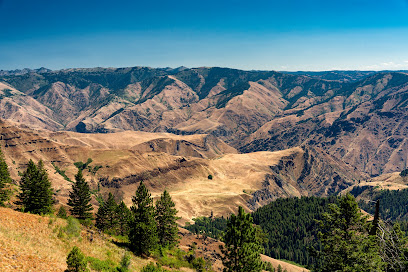
Hells Canyon Adventures Lodge, Warehouse, & Gift Shop
Experience the thrill of Hells Canyon with exciting boat tours, fishing charters, and breathtaking outdoor adventures at Hells Canyon Adventures Lodge.

Hells Canyon Creek Visitor Center
Explore the stunning Hells Canyon Creek Visitor Center, your gateway to adventure in Oregon's breathtaking landscapes and rich wildlife.
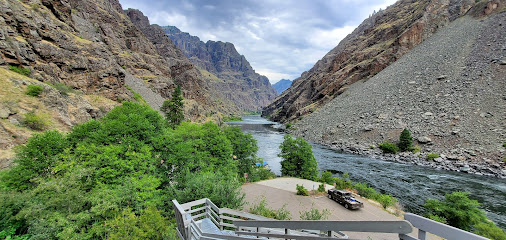
Hells Canyon
Discover the breathtaking beauty of Hells Canyon, North America's deepest river gorge, perfect for adventure seekers and nature lovers alike.
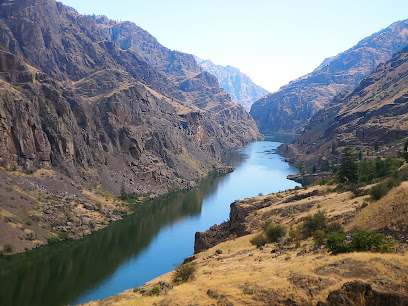
Hells Canyon National Rec Area
Experience the breathtaking beauty and adventure of Hells Canyon National Recreation Area, a must-visit destination for nature lovers and outdoor enthusiasts.

Hells Canyon National Recreation Area-Idaho
Discover the breathtaking beauty of Hells Canyon National Recreation Area in Idaho, where adventure, wildlife, and stunning landscapes await every traveler.

Hells Canyon National Recreation Area-Snake River
Discover the breathtaking beauty and adventure of Hells Canyon National Recreation Area, a top destination for outdoor enthusiasts in Idaho.

Essential places to dine
Smitty's Pancake & Steak House
Discover delicious American cuisine at Smitty's Pancake & Steak House - perfect for breakfast lovers and family dining in Idaho Falls.
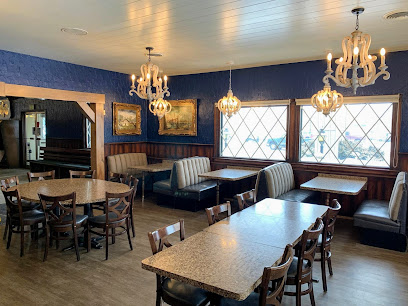
Hells Canyon National Recreation Area-Idaho
Explore Hells Canyon National Recreation Area: Idaho's breathtaking wilderness with deep gorges, abundant wildlife & endless outdoor adventures.

Hells Canyon National Recreation Area-Snake River
Discover breathtaking landscapes and endless outdoor adventures at Hells Canyon National Recreation Area along the scenic Snake River.

Markets, malls and hidden boutiques
Hells Canyon National Recreation Area
Explore Hells Canyon National Recreation Area: A breathtaking blend of adventure, wildlife, and stunning landscapes in Oregon.
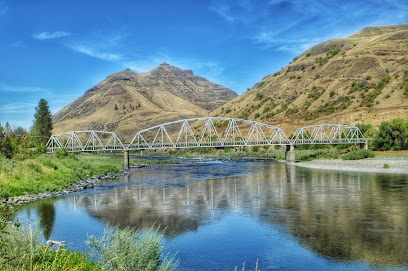
Hells Canyon National Recreation Area-Idaho
Discover the breathtaking landscapes and adventure-filled activities at Hells Canyon National Recreation Area in Idaho.

Hells Canyon National Recreation Area-Snake River
Discover the breathtaking beauty and adventure of Hells Canyon National Recreation Area in Idaho, where outdoor enthusiasts can explore nature's wonders.

Essential bars & hidden hideouts
Hells Gate State Park
Experience the stunning landscapes and outdoor adventures at Hells Gate State Park, a true gem in Idaho's natural beauty.
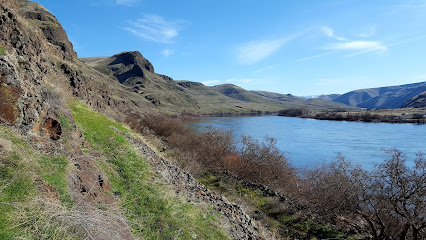
Hells Canyon National Recreation Area
Unveil the natural wonders of Hells Canyon National Recreation Area, a breathtaking park known for its stunning landscapes and adventurous outdoor activities.
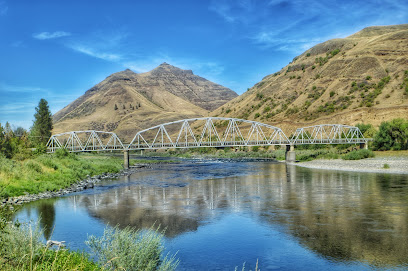
Big Bar Camping Area
Discover the beauty of Idaho at Big Bar Camping Area, where adventure and tranquility meet in the heart of nature.
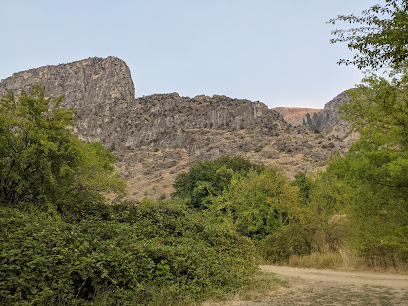
Hells Canyon
Explore Hells Canyon: North America's deepest gorge, offering stunning landscapes, thrilling outdoor activities, and diverse wildlife in Idaho.
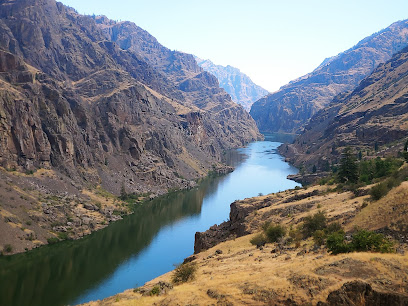
Hells Canyon National Rec Area
Discover the breathtaking landscapes and thrilling adventures at Hells Canyon National Recreation Area, Oregon's premier natural wonder.
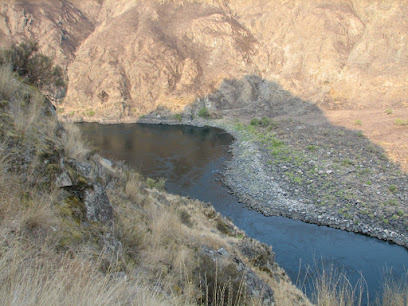
Dug Bar
Explore Dug Bar, a historical landmark in Oregon, where nature meets the rich history of the American West. Discover your adventure today!
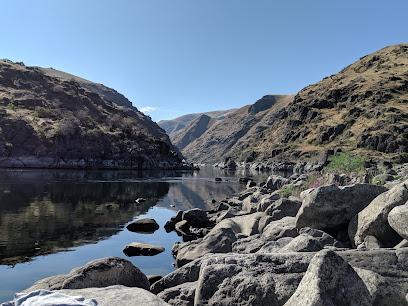
Hells Canyon National Recreation Area-Snake River
Discover the beauty of Hells Canyon National Recreation Area, an adventure-filled destination featuring breathtaking landscapes, outdoor activities, and rich wildlife.

Hells Canyon National Recreation Area-Idaho
Explore Hells Canyon National Recreation Area in Idaho, where adventure and breathtaking landscapes await in the deepest canyon in North America.

Local Phrases about Hells Canyon National Recreation Area
-
- HelloHowdy
[haw-dee] - GoodbyeSee ya
[see yah] - YesYessir
[yes-sir] - NoNah
[nah] - Please/You're welcomePlease and thank ya kindly
[pleez and thank yah kine-lee] - Thank youMuch obliged
[muhch uh-blahy-jed] - Excuse me/SorryPardon me
[par-dn mee] - How are you?Howdy
[haw-dee] - Fine. And you?Just fine. How 'bout you?
[just fahyn. how bout yah] - Do you speak English?Ya speak English?
[yah speak ing-glish] - I don't understandI ain't catchin' yer drift
[i aint kach-in yer drift]
- HelloHowdy
-
- I'd like to see the menu, pleaseCan I take a gander at the grub list?
[can i take uh gan-der at the gruhb list] - I don't eat meatI don't fancy no meat
[i dont fan-see no meat] - Cheers!Bottoms up!
[bot-ums up] - I would like to pay, pleaseI reckon it's time to settle up
[i reh-kin its tahm to set-l up]
- I'd like to see the menu, pleaseCan I take a gander at the grub list?
-
- Help!Git some help!
[git sum help] - Go away!Skedaddle!
[sked-uh-dl] - Call the Police!Ring up the Sheriff!
[ring up the sher-iff] - Call a doctor!Holler for the Doc!
[hol-er for the dok] - I'm lostDone gone and lost myself
[done gone and lost myself] - I'm illFeelin' poorly
[feel-in poor-lee]
- Help!Git some help!
-
- I'd like to buy...I reckon I'll take...
[i reh-kin ill take] - I'm just lookingI'm just browsin'
[im just brow-sin] - How much is it?What's the damage?
[whats the dam-ij] - That's too expensiveThat's a might pricey
[thats a mite prahy-see] - Can you lower the price?Can ya do me a solid on the cost?
[can yah do me a sah-lid on the cost]
- I'd like to buy...I reckon I'll take...
-
- What time is it?What's the hour?
[whats the ahr] - It's one o'clockIt's high noon
[its high noon] - Half past (10)Half-past ten
[half-past ten] - MorningMornin'
[morn-in] - AfternoonAfternoon
[after-noon] - EveningEvenin'
[even-in] - YesterdayYest'day
[yest-day] - TodayToday
[to-day] - TomorrowTomorra
[tom-or-rah] - 1One
[wun] - 2Two
[too] - 3Three
[three] - 4Four
[for] - 5Five
[fahyv] - 6Six
[siks] - 7Seven
[sev-uhn] - 8Eight
[eyt] - 9Nine
[nahyn] - 10Ten
[ten]
- What time is it?What's the hour?
-
- Where's a/the...?Where's the...
[wheres the] - What's the address?What's the location?
[whats the loh-kay-shun] - Can you show me (on the map)?Can ya point me the way?
[can yah point me the way] - When's the next (bus)?When's the next ride comin'?
[whens the next rahyd com-in] - A ticket (to ....)A pass (to ...)
[a pass to]
- Where's a/the...?Where's the...
History of Hells Canyon National Recreation Area
-
Hells Canyon, North America's deepest river gorge, was formed over millions of years through geological processes including volcanic activity, tectonic shifts, and erosive forces of the Snake River. The canyon's dramatic landscape features steep cliffs and rugged terrain, shaped by the river carving through basalt and granite layers.
-
For thousands of years, the Nez Perce, Shoshone, and other Native American tribes inhabited the Hells Canyon region. These tribes relied on the Snake River for fishing, particularly salmon, which was a staple of their diet. They also hunted game and gathered plants in the fertile canyon lands. Rock art and archaeological sites in the area provide insights into their rich cultural heritage.
-
In 1805, the Lewis and Clark Expedition passed near Hells Canyon on their journey to the Pacific Ocean. Although they did not venture into the canyon itself, their encounters with the Nez Perce tribe in the region were significant. The Nez Perce provided the expedition with crucial guidance and supplies, helping them navigate the challenging terrain.
-
During the early 19th century, fur trappers and traders, including those from the Hudson's Bay Company, explored Hells Canyon in search of beaver pelts. These trappers established trading routes and interacted with local indigenous populations, contributing to the early economic activity in the region.
-
In the late 19th and early 20th centuries, European-American settlers began homesteading in Hells Canyon. They established small farms and ranches, despite the area's challenging terrain and isolation. Remnants of these settlements, including cabins and irrigation systems, can still be found throughout the canyon.
-
The mid-20th century saw significant development in Hells Canyon with the construction of hydroelectric dams on the Snake River. The Hells Canyon Dam, completed in 1967, is the third in a series of dams that provide electricity and irrigation to the surrounding regions. While the dams brought economic benefits, they also altered the river's ecosystem and affected fish populations.
-
In 1975, the United States Congress designated Hells Canyon as a National Recreation Area to preserve its unique natural and cultural resources. Managed by the U.S. Forest Service, the area spans over 652,000 acres and offers a range of recreational activities, including hiking, boating, and wildlife viewing, while protecting the canyon's historical and ecological integrity.
Hells Canyon National Recreation Area Essentials
-
Hells Canyon National Recreation Area is situated along the Idaho-Oregon border. The nearest major airports are Boise Airport (BOI) in Idaho and Spokane International Airport (GEG) in Washington. From Boise, it's about a 2.5-hour drive to the southern entrance of the recreation area. From Spokane, the drive takes approximately 4 hours. You can rent a car from either airport to make the journey. Alternatively, local tour operators offer shuttle services from Boise to Hells Canyon.
-
Within Hells Canyon National Recreation Area, the primary mode of transportation is by car or boat. The area is vast and remote, with limited public transportation options. Renting a vehicle is highly recommended for exploring the various viewpoints and trailheads. For water-based exploration, consider renting a jet boat or joining a guided river tour. Some areas are accessible only by hiking or horseback, so plan accordingly.
-
The official currency is the United States Dollar (USD). Credit and debit cards are widely accepted in most lodges, restaurants, and shops within the area. However, it's advisable to carry some cash for smaller establishments or in more remote areas where card payments might not be possible. ATMs are available in nearby towns such as Riggins and Cambridge.
-
Hells Canyon National Recreation Area is generally safe for visitors, but standard precautions should be taken. There are no high-crime areas specifically targeting tourists, but always be aware of your surroundings and secure your belongings. Wildlife encounters are possible, so keep a safe distance from animals and do not feed them. Ensure that you are well-prepared for outdoor activities by carrying sufficient water, food, maps, and first-aid supplies.
-
In case of an emergency, dial 911 for immediate assistance. Cell phone service can be unreliable in remote areas, so familiarize yourself with the location of the nearest ranger station or visitor center. Carry a satellite phone or emergency beacon if you plan to venture into backcountry areas. It is also recommended to have travel insurance that covers medical emergencies and evacuation. First-aid kits and basic medical supplies should be part of your gear.
-
Fashion: Do wear comfortable, weather-appropriate clothing and sturdy hiking boots. Avoid wearing flip-flops or open-toed shoes on trails. Religion: Respect the natural environment as many areas are considered sacred by local Indigenous tribes. Public Transport: Limited or non-existent; rely on rental cars or guided tours. Greetings: Do greet fellow hikers and visitors with a friendly nod or hello. Eating & Drinking: Do carry out all trash and follow Leave No Trace principles. Don't litter or leave food scraps that can attract wildlife.
-
For an authentic experience, visit during the shoulder seasons (spring and fall) when the weather is pleasant, and crowds are thinner. Engage with local guides who can provide rich historical and cultural insights into the area. Don't miss a jet boat tour through the canyon for breathtaking views and unique perspectives. Try locally-sourced foods at nearby eateries in towns like Riggins or Cambridge. Participate in ranger-led programs to learn more about the area's geology, wildlife, and history.
Nearby Cities to Hells Canyon National Recreation Area
-
Things To Do in Pendleton
-
Things To Do in Kennewick
-
Things To Do in Richland
-
Things To Do in Boise
-
Things To Do in Nampa
-
Things To Do in Coeur d'Alene
-
Things To Do in Spokane
-
Things To Do in Missoula
-
Things To Do in Sun Valley
-
Things To Do in Mountain Home
-
Things To Do in Ketchum
-
Things To Do in Newport
-
Things To Do in Sandpoint
-
Things To Do in Polson
-
Things To Do in Yakima



